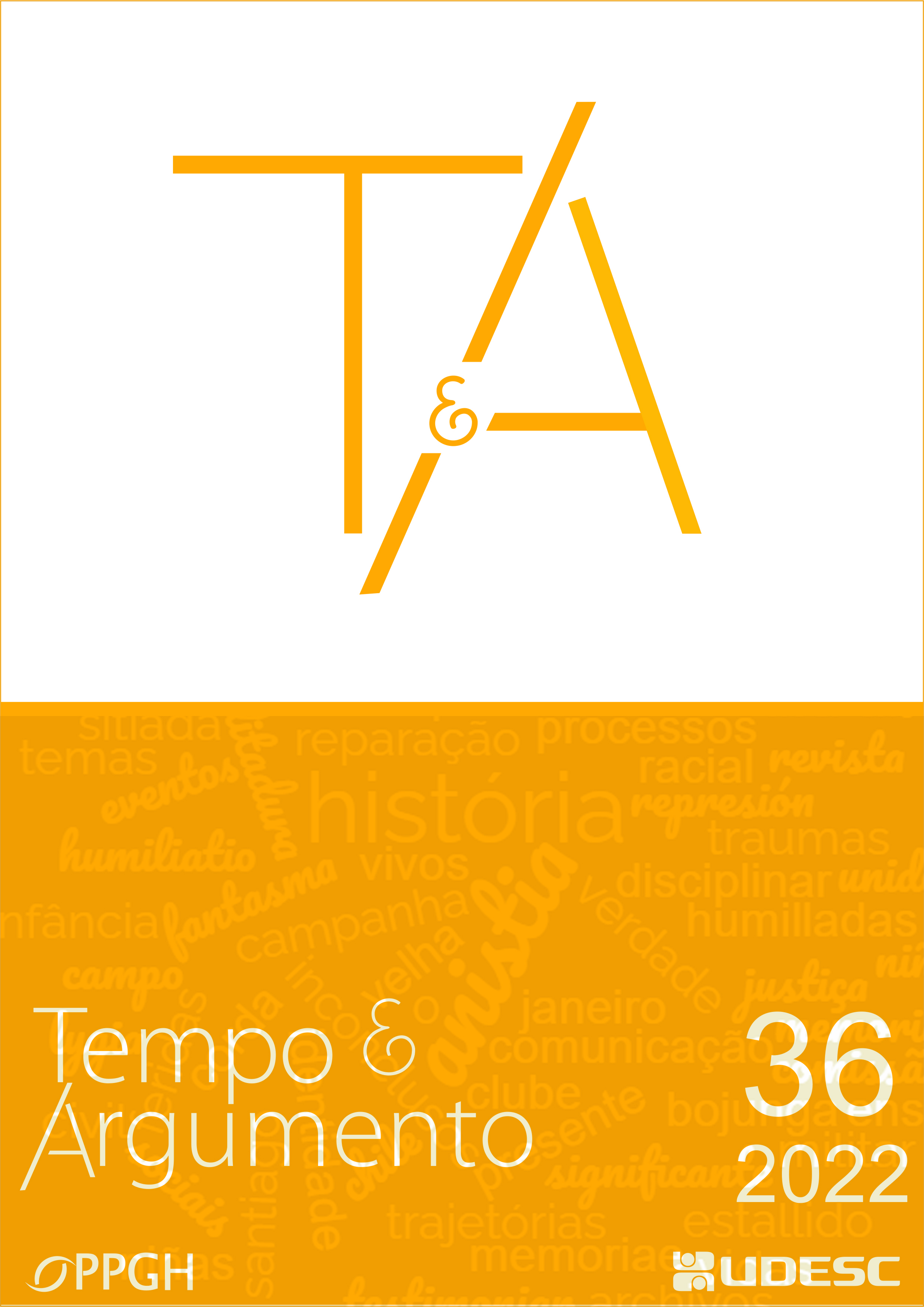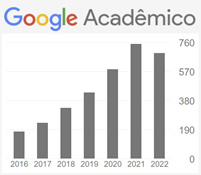Seña y contraseña en el torno. Las huellas de un lenguaje simbólico en el Asilo de Expósitos y Huérfanos de Montevideo 1894-1934
DOI :
https://doi.org/10.5965/2175180314362022e0205Mots-clés :
señales, torno, abandono, expósitos, huérfanosRésumé
En el Asilo de Expósitos y Huérfanos de Montevideo existió un torno desde 1818 (siendo la Inclusa) hasta 1934 (año en que el torno fue prohibido). En este torno o dispositivo giratorio, se dejaban bebes con señales, objetos como cartas, medallas, fotos, ropa, entre otros. En este artículo se busca analizar estos objetos a través de los lentes de la historia de las emociones, buscando entender las emociones como un eco de valores y prácticas sociales propios de una moral y época determinadas. Se propone visibilizar y analizar estas señales y el lenguaje simbólico de las mismas, verlas como mensajes cifrados propios de un diálogo íntimo entre las familias y sus proles. El 90 % de estos bebés traían señales, el tiempo de recuperación legal era de dos años, en ese período, sólo el 30 % lograba recuperar a su prole.
Téléchargements
Références
BARRÁN, José Pedro. Historia de la sensibilidad en el Uruguay 1800-1860. La cultura Bárbara. Montevideo: Ediciones de la Banda Oriental, tomo I, 1998.
BENJAMIN, Walter. A obra de arte na era da sua reprodutibilidade técnica» (traducción de la última versión de «Das Kunstwerk im Zeitalter seiner technischen Reproduzierbarkeit», en Gesammelte Schriften, por Marijane Lisboa). En Walter BENJAMIN, Magia e técnica, arte e política. São Paulo: Brasiliense, 1987b.
BLUM, Ann. Domestic Economies. Family, Work, and Welfare in Mexico City, 1884-1943. Engendering Latin America Series. 2010.
DERRIDA, Jacques «Freud y la escena de la escritura» (traducción de Patricio Peñalver). En La escritura y la diferencia. Barcelona: Anthropos: 271-317, 1989.
DERRIDA, Jacques De la gramatología. México: Siglo XXI, 2005.
FARGE, Arlette. Efusión y tormento. El relato de los cuerpos. Historia del pueblo en el siglo XVIII. Buenos Aires: Katz, 2008.
FOUCAULT, Michel. La vida de los hombres infames. Buenos Aires: Editorial Acmé S.A.C.I., 1996. Disponible en: https://historiasenconstruccion.wikispaces.com/ file/view/L09+-+MF.+La+vida+de+los+hombres+infames. pdf. Acceso en: 5 mar. 2020.
FOUCAULT, Michel. Nacimiento de la biopolítica. Buenos Aires: FCE, 2007.
GORDON, Steven. «Social structural effects on emotions». En T. Kemper (ed.), Research agendas in the sociology of emotions. Nueva York: State University of New York Press, pp. 145-179, 1990.
OSTA, María Laura. Niños y niñas expósitos y huérfanos en Montevideo del siglo XIX. Revista de la Facultad de Derecho, 41: 155-189, 2016. Disponible en https://revista.fder.edu.uy/index.php/rfd/article/view/559.
OSTA, María Laura. Imágenes resistentes. El lenguaje de las señales en las prácticas de abandono en Montevideo (1895-1934). Montevideo: bmr Académica, 2019.
OSTA, María Laura; ESPIGA, Silvana. Las infancias sin historia: propuestas para analizar y pensar un discurso historiográfico. Páginas de Educación, 10(2), 2017. Disponible en https://revistas.ucu.edu.uy/index.php/paginasdeeducacion/article/view/1427.
RODRÍGUEZ VILLAMIL, Silvia y SAPRIZA, Graciela. Mujer, Estado y política en el Uruguay del siglo XX. Ediciones de la Banda Oriental, Montevideo, 1984.
SOSENSKI, Susana Enseñar historia de la infancia a los niños y niñas: ¿para qué? Tempo e Argumento, 7(14): 132 154, 2015. Disponible en http://revistas.udesc.br/ index.php/tempo/article/viewFile/2175180307142015132/4254.
Téléchargements
Publiée
Comment citer
Numéro
Rubrique
Licence
(c) Tous droits réservés Tempo e Argumento 2022

Ce travail est disponible sous licence Creative Commons Attribution - Pas d’Utilisation Commerciale 4.0 International.
Os artigos cujos autores são identificados representam a expressão do ponto de vista de seus autores e não a posição oficial da Tempo e Argumento.





